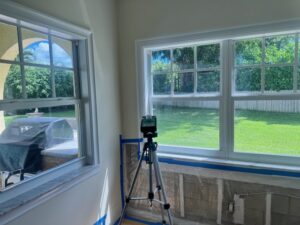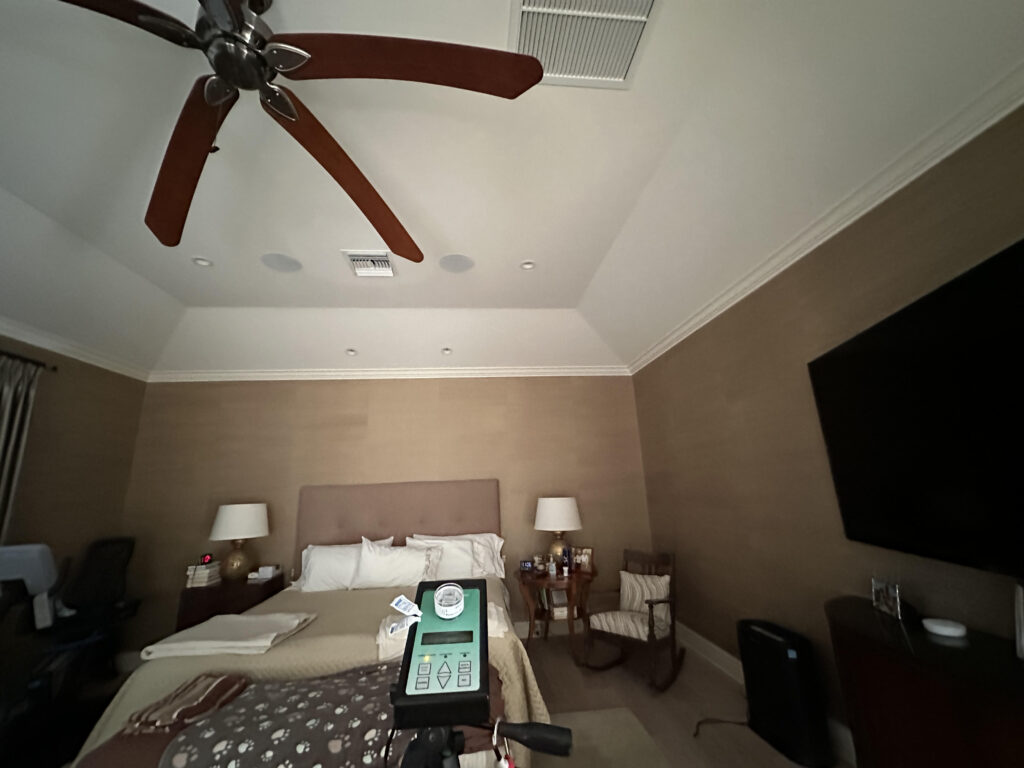You had mold remediation, great, the mold is now gone. But now you may be asking yourself,
“Can mold come back after remediation”
The answer is both yes and no.
If mold remediation is done properly than there is a good chance that the mold will not return. But if mold abatement is not done properly, than the possibility absolutely exists for mold to return. If you don’t fix the source of the mold problem, this can also lead to a recurring issue in the home.
Lets look at some causes of why mold can come back after remediation.
Causes of Recurring Mold Growth
Poor Ventilation
Poor ventilation is one of the most common causes of recurring mold growth in homes. Without proper airflow, moisture can become trapped and create an ideal environment for mold to thrive. This is especially true in bathrooms or other areas with high humidity levels, such as laundry rooms or basements. To prevent this from happening, make sure your home has adequate ventilation by running your air conditioning on auto-cycle consistently and using exhaust fans when necessary.
High humidity levels are another major cause of mold growth in homes. Humidity that exceeds 60% provides a perfect breeding ground for mold spores to grow and spread quickly throughout the house. To reduce indoor humidity levels, use dehumidifiers or air conditioners to keep the air dryer and less hospitable for mold growth. Additionally, you should also inspect your home’s pipes and roofs regularly for any signs of leaks which could be contributing to higher than normal humidity levels inside your home.
Leaks
Leaky pipes, windows, roofs and other parts of the building structure can also lead to recurring mold problems if left unchecked over time due to the increased moisture they bring into a space. Add that with high humidity and you now have a mold colony that can form.
Even small leaks can cause significant damage if not addressed promptly as water will seep into walls, floors, ceilings – all places where it’s difficult (and expensive) to repair once it’s been there too long. Make sure you inspect these areas periodically so you can catch any issues before they become bigger problems down the line.
Drainage Issues
Finally, poor drainage around a home’s foundation can contribute significantly towards recurrent mold infestations as well. Standing water creates an ideal environment for mold spores to take hold and flourish over time – even more so during periods of heavy rain. To avoid this issue altogether, make sure gutters are clear at all times so that water is directed away from your property rather than pooling near its base where it could potentially seep through cracks or openings leading indoors. Ensuring the home is properly waterproofed at the foundation is crucial.
Preventing Mold Growth From Reoccurring
We already went through a few strategies to prevent mold from growing back after remediation but to further elaborate, the source of the mold needs to be identified and properly remediated.
As a mold remediation company there have been a few instances of previous clients reporting mold growing back in the same spot it was present before only to find out they never repaired the leak.
Things to keep in mind:
- A roof tends to leak in the same spot multiple times
- An HVAC drain line can back up more than one time
- Waterproofing on the outside of the home is essential
Any time a leak has been repaired it’s always smart to water test the area to ensure the leak has been repaired properly.
How To Water Test A Leak
Performing a water test for a leak is simple. You literally just take a house and hit the known leaking area for an extended period of time. If water comes in, wa-la! You still have a leak. If water doesn’t come in than you don’t. The rules aren’t any easier than that but here are some tips:
Apply Pressure
You can either get a pressure nozzle for the hose or even put your finger in the middle of where the water comes out to create pressure.
Apply Water for 15-20 Minutes
You want to apply water to the suspected leak for at least 15-20 minutes
Hit The Surrounding Areas With Water
The leak can be in a larger are than previously thought. By hitting the entire area with water you can ensure all areas are properly checked.
How Do You Know If Remediation Was Done Properly The First Time
Imagine spending thousands of dollars on mold remediation only to find out that it was not done properly and now the problem has come back.
But how do you know if remediation was done right. I mean it’s not like you are a mold expert. Here are a few tips to determine if remediation was done right the first time.
Have A Mold Inspection Done

A mold inspection can tell you everything that you need to know about a water damaged area. It’s important that you have an independent inspector do the job and not the person that actually did the remediation.
A post-mold remediation verification inspection should be done prior to any containment barriers be taken down. The third party inspector will tell you if everything is fine with the remediation before any build back is done.
Conclusion
Understanding the causes of recurring mold growth, being aware of signs of its presence, taking preventive measures to reduce the risk of it returning, and seeking professional remediation services when necessary are all important steps for keeping your home healthy. By following these steps you can help ensure that does mold keep coming back is not an issue in your home.


